|
Fred
Lackey (Tallahassee, Florida)
My life took a turn for the
better when I met Mr. and Mrs. Fred Lackey. They have
teamed up to make syrup for a long, long time, and have
had an annual Fun Day (by invitation) since 1980. They
pretty well define "good folks."
As mentioned, the Lackeys have
made syrup for a long time and they do it now on a small
commercial scale. They are a team and it was great fun to
listen to their routine, which is one I'd like to emulate
(". . . by daylight, I have the first kettle ready to
cook and she brings a breakfast biscuit, and we start
skimming"). The Lackeys have a limited production and
do not ship, which is too bad because I have never tasted
better sugar-cane syrup.
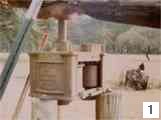
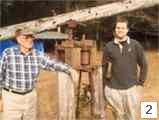
Slides 1
and 2
is a Belknap Co. New Blue Grass 1896 Model No.1 (Louisville
Kentucky). The Lackeys do not use this mill; it is part of a
collection of antique farm implements. Pictured are Mr.
Lackey and Will Outlaw.
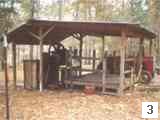
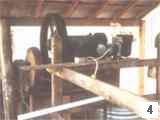
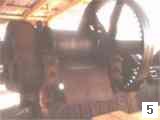
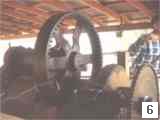
Slides 3,
4,
5,
and 6,
are pictures of the Lackey grinding shed and his Golden
No.27. This mill is in excellent condition. The gears are not
worn and he has replaced the bearings.
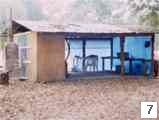
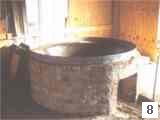
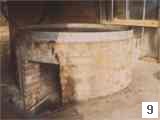
Slides 7,
8,
and 9,
show the Lackey syrup shed and close-ups of the Lackey
80-gallon kettle. It takes a little less than 200 feet of
cane (row spacing at 4.5 feet) to fill the kettle. Note
that this kettle also has a second rim, as described for
the Bradley, Bennett and other kettles. The burners are
fashioned from grease fittings that have been ground down
to open them up.
Mr. Lackey uses a numbered
variety of cane from IFAS (Quincy,
Florida) and grows it
without irrigation. He fertilizes three times each year
with a low-nitrogen fertilizer that does not contain
ammonium.
Mr.
Lackey uses the boiling point (226 ºF) to judge when to
take up the syrup. I took the boiling
point of his syrup, and it was dead on 226 ºF, which
corresponded to 24.2 % water on my honey refractometer.
(Data from my inexpensive honey refractometer should not
be overinterpreted). The Lackey syrup is a little thinner than average, and a
two-year-old sample was not granulated. Syrup that is too
thick granulates whereas that which is too thin is
perishable; a commercial sample that I purchased this year
molded within 3 weeks!
|